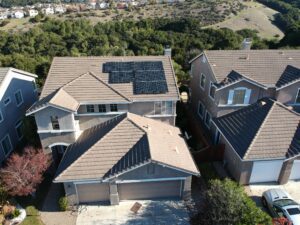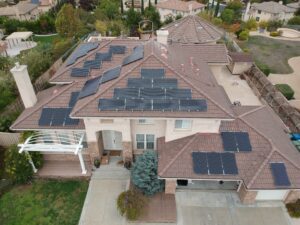It depends on how much electricity you use. Two homes the exact same size will use different amounts of electricity and therefore require different size systems. Major electrical loads within a home are air conditioners, electric heaters, pools, and other heating elements or motors.

That being said, an average 2,500 sq. ft. single-family home uses about 5,000 kilowatt-hours of electricity per year. A 3 kilowatt (AC) system will generate nearly all the electricity required for such a home on an annual basis. Sometimes a PV system can be installed that is slightly over-sized to allow for the possibility of a growing family or other factors that may play a part. When a system overproduces electricity, the unused portion is fed back into the grid and will actually be credited back to your utility account in a program called net-metering.

The actual amount of electricity produced is dependent on how much solar energy reaches your site. An optimally located array would face south and have nothing obstructing the sun’s rays from reaching the solar panels, such as trees or other structures that produce shading.
Think too about your energy goals: are you interested in completely eliminating your monthly electric bill (minus standard utility connection fees) or just make a dent in the bill? System size will then vary on how much electricity you intend to produce.

Businesses are also very unique in their energy needs so everything must be factored in to calculate the size of system needed.
Actual system production can easily be calculated by Synergy Power, with a free quote given over the phone or after you fill out our form below!
